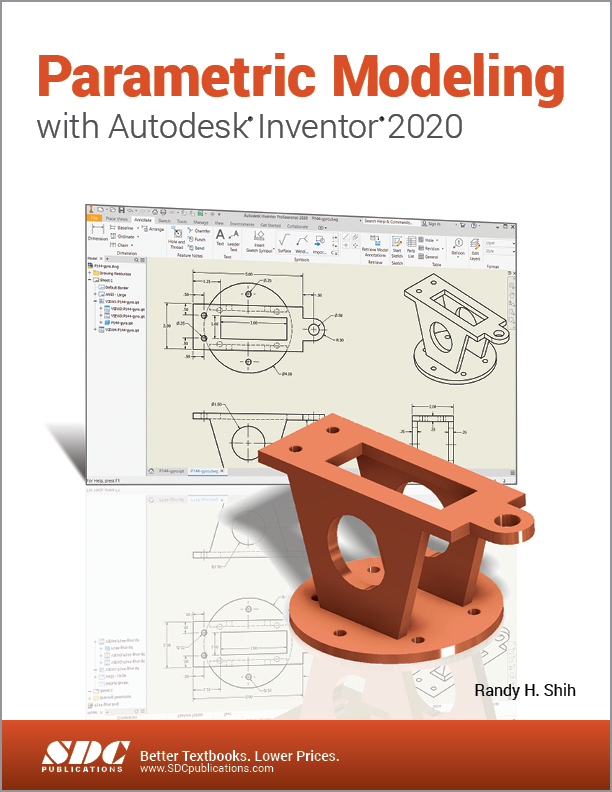


Note that the leftmost vertex of the 4-inch horizontal line is coincident with the bottom-right vertex of the automatically projected rectangle. Next, draw the 4-inch horizontal, 2.5-inch vertical, and 3-inch horizontal lines shown in Figure 7.Select all of the automatically projected lines associated the outlined rectangle, and convert them to construction geometry (Figure 6).Now, reorient the model and create a new 2D sketch on the highlighted surface (Figure 5).

Observe that the thickness of this feature is 3 inches.

Exit the sketching mode, and create the first extrusion using the “Extrude” parameters given in Figure 4.Add any other required dimensions (Figure 3).Note that some dimension values were input during line creation. Then, create the horizontal and vertical lines shown in Figure 2.Use the “Center Point Circle” command to create the 1.5-inch circle shown in Figure 1.Close the “Document Settings” dialog box, and select the “Sketch” tab to create the sketch elements.Note: the “Snap Spacing” parameters are each set to 0.125 inches, “snaps per minor” is set to 1, and “minor lines” is set to 8. Next, select the “Document Settings” icon, and set the “Snap Spacing” and other parameters under the “Sketch” tab.Then, close the “Application Options” dialog box. Select the “Application Options” icon, and make sure that “Snap to grid” under the “Sketch” tab is checked. At this point, let’s set the grid snap and spacing parameters to facilitate the sketching tasks.After opening the part, we’ll be able to create a new sketch. Create a Chapter8 folder (if it does not already exist), and save this exercise in that folder.The part and drawing were created in the following manner. During this exercise, we’ll also generate the drawing. Part Drawings and 3D Model-Based Definitionġ4. Assembly Modeling - Putting It All Togetherġ5. Content Center and Basic Motion Analysisġ6.This Autodesk Inventor (Slide Mount) model will consist of several features. Parent/Child Relationships and the BORN TechniqueĨ. Special reference guides show students where the performance tasks are covered in the book.ħ. The content of Parametric Modeling with Autodesk Inventor 2022 covers the performance tasks that have been identified by Autodesk as being included on the Autodesk Inventor 2022 Certified User examination. Other featured topics include sheet metal design, motion analysis, 2D design reuse, collision and contact, stress analysis, 3D printing and the Autodesk Inventor 2022 Certified User Examination.Īutodesk Inventor 2022 Certified User Examination The lessons guide the user from constructing basic shapes to building intelligent mechanical designs, to creating multi-view drawings and assembly models. It uses a hands-on, exercise-intensive approach to all the important parametric modeling techniques and concepts.
Parametric modeling with autodesk inventor 2013 series#
Parametric Modeling with Autodesk Inventor 2022 contains a series of seventeen tutorial style lessons designed to introduce Autodesk Inventor, solid modeling, and parametric modeling. Contains a chapter introducing you to stress analysis.Covers parametric modeling, 3D Modeling, 3D printing, and the Autodesk Inventor Certified User Exam.Uses a hands-on, exercise-intensive, tutorial style approach.Designed specifically for beginners with no prior CAD experience.


 0 kommentar(er)
0 kommentar(er)
